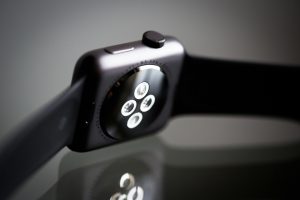Wearable technology has transformed from a niche market into a booming industry, impacting various aspects of our daily lives. From fitness trackers to smartwatches, wearables have become integral to how we monitor our health, stay connected, and even interact with the digital world. As technology continues to evolve, so too does the potential of wearable tech. This article explores the latest trends and innovations in wearable technology, providing insights on how these advancements can solve real-world problems and enhance our lives.
Wearable technology has seen exponential growth in recent years, driven by advancements in materials science, miniaturization, and wireless connectivity. These devices, which can be worn on the body, offer a range of functionalities from tracking physical activity and monitoring health metrics to providing augmented reality experiences and facilitating communication. The future of wearable tech promises even greater integration into our daily routines, offering more sophisticated and personalized experiences. This article delves into the emerging trends and innovations in wearable technology, highlighting how they can address current challenges and improve our quality of life.
Emerging Trends in Wearable Tech
Health and Wellness Monitoring
One of the most significant trends in wearable tech is the focus on health and wellness. Modern wearables are equipped with sensors that can monitor various health metrics, including heart rate, sleep patterns, blood oxygen levels, and even stress levels. For instance, devices like the Apple Watch and Fitbit offer comprehensive health tracking features that can provide valuable insights into a user’s overall well-being.
Solution to Health Problems:
Wearable technology can play a crucial role in preventive healthcare. By continuously monitoring vital signs, these devices can alert users to potential health issues before they become serious. For example, a smartwatch can detect irregular heart rhythms and notify the wearer to seek medical attention, potentially preventing a heart attack. Furthermore, wearables can help manage chronic conditions by providing real-time data to healthcare providers, enabling more personalized and effective treatment plans.
Tips for Using Health Wearables:
- Consistency is Key: Wear your device regularly to get accurate data.
- Set Goals: Use the data to set achievable health and fitness goals.
- Stay Informed: Keep up with software updates to ensure you have the latest features and improvements.
Smart Fabrics and E-Textiles
The integration of technology into clothing is another exciting trend. Smart fabrics and e-textiles embed sensors and conductive threads into garments, allowing them to monitor physiological data or interact with other devices. These innovations are being applied in various fields, from sports and fitness to healthcare and fashion.
Innovative Applications:
- Sports and Fitness: Smart clothing can monitor an athlete’s performance, providing real-time feedback on metrics like muscle activity and posture. This can help improve training efficiency and prevent injuries.
- Healthcare: E-textiles can be used to create garments that monitor patients’ vital signs continuously, providing a less intrusive alternative to traditional medical devices.
- Fashion: Designers are incorporating LEDs and flexible screens into clothing, creating garments that can change color or display messages, offering new forms of self-expression.
How to Incorporate Smart Fabrics into Daily Life:
- For Athletes: Invest in smart workout gear that provides feedback on your form and performance.
- For Health Monitoring: Use smart textiles to track health metrics seamlessly, without the need for multiple devices.
- For Fashion Enthusiasts: Explore clothing that can adapt to different settings or moods through color and pattern changes.
Augmented Reality (AR) and Virtual Reality (VR)
AR and VR technologies are making significant inroads into the wearable tech market. Devices like AR glasses and VR headsets are becoming more affordable and accessible, offering immersive experiences for gaming, education, and professional applications.
Applications and Benefits:
- Gaming: VR headsets provide immersive gaming experiences, transporting users into virtual worlds.
- Education: AR glasses can enhance learning by overlaying digital information onto the real world, making complex subjects more understandable.
- Professional Use: In industries like healthcare and engineering, AR and VR can be used for training and simulation, improving skills without the risk of real-world consequences.
Steps to Get Started with AR/VR Wearables:
- Research the Market: Identify the AR/VR devices that best meet your needs and budget.
- Setup and Calibration: Follow the manufacturer’s instructions to set up your device for optimal performance.
- Explore Applications: Start with introductory apps and games to get familiar with the technology before moving on to more advanced uses.
Innovations Driving the Future of Wearable Tech
Advanced AI and Machine Learning
Artificial intelligence (AI) and machine learning (ML) are integral to the future of wearable tech. These technologies enable wearables to learn from user data, providing more personalized and accurate insights. For example, AI can analyze sleep patterns to offer customized recommendations for improving sleep quality.
Benefits of AI in Wearables:
- Personalization: AI can tailor the user experience based on individual habits and preferences.
- Predictive Insights: ML algorithms can predict potential health issues by analyzing patterns in the data collected.
- Enhanced User Interaction: Voice assistants and gesture recognition powered by AI can make interacting with wearables more intuitive and hands-free.
Implementing AI-Driven Wearables:
- Explore AI Features: Utilize the AI capabilities of your wearable to receive personalized insights and recommendations.
- Data Privacy: Ensure that the wearable device you choose has robust privacy policies to protect your personal data.
- Stay Updated: Keep your device’s firmware and software updated to benefit from the latest AI advancements.
Battery and Energy Innovations
Battery life has always been a limitation for wearable devices. However, recent innovations in energy harvesting and battery technology are addressing this challenge. New materials and designs are enabling longer battery life and even self-charging wearables that use solar energy or kinetic energy from body movements.
Advances in Battery Technology:
- Flexible Batteries: These can be integrated into clothing and other flexible wearables, providing power without compromising comfort.
- Energy Harvesting: Devices that can generate power from environmental sources like sunlight or body heat reduce the need for frequent recharging.
- Fast Charging: Innovations in charging technology are reducing the time required to recharge devices, making wearables more convenient to use.
Tips for Maximizing Wearable Battery Life:
- Optimize Settings: Adjust settings like screen brightness and notifications to conserve battery.
- Regular Charging Routine: Establish a regular charging routine to ensure your device is always ready to use.
- Utilize Energy-Saving Modes: Enable energy-saving modes during periods of low activity to extend battery life.
Biometric Authentication
Security and privacy are paramount as wearables collect sensitive personal data. Biometric authentication, such as fingerprint or facial recognition, is being integrated into wearables to enhance security.
Advantages of Biometric Authentication:
- Enhanced Security: Biometric data is unique to each individual, making it more secure than traditional passwords.
- Convenience: Quick and easy access to devices and data without the need for remembering passwords.
- Multi-Factor Authentication: Combining biometric authentication with other security measures can provide an additional layer of protection.
Implementing Biometric Security:
- Choose Devices with Biometric Features: Look for wearables that offer biometric authentication for added security.
- Regularly Update Biometric Data: Ensure that the biometric data stored on your device is up to date for accurate recognition.
- Combine Security Measures: Use biometric authentication in conjunction with other security features for comprehensive protection.
Conclusion
The future of wearable technology is incredibly promising, with innovations poised to make these devices even more integral to our daily lives. From advanced health monitoring and smart fabrics to immersive AR/VR experiences and AI-driven personalization, wearables are set to revolutionize how we interact with technology and the world around us. By staying informed about these trends and incorporating wearables into our routines, we can harness their full potential to improve our health, enhance our productivity, and enrich our lives.
As wearable tech continues to evolve, it will undoubtedly present new opportunities and challenges. Staying ahead of the curve means not only embracing these innovations but also understanding how to use them effectively. Whether you’re a fitness enthusiast, a tech-savvy professional, or someone looking to improve your daily life, the future of wearable technology holds exciting possibilities for everyone.

